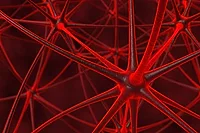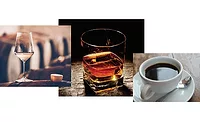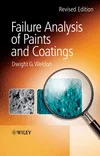Researchers Unlock Mystery of "Coffee Ring Effect"
If you’ve ever spilled a drop of coffee on a surface, you might have noticed the curious way the color concentrates at the edges when the coffee dries. This is known as the “coffee ring effect”, and recently, researchers have determined that the shape of the particles in the liquid is an important factor in creating this pattern.
ARLINGTON, VA – If you’ve ever spilled a drop of coffee on a surface, you might have noticed the curious way the color concentrates at the edges when the coffee dries. This is known as the “coffee ring effect”, and recently, researchers have determined that the shape of the particles in the liquid is an important factor in creating this pattern. The research results could eventually translate into new techniques or formulations for product coatings, or better inks and paints. This work, published in the August 18 issue of the journal Nature, was performed by Arjun Yodh and colleagues at the University of Pennsylvania.
“We found that if you change the shape of the particles in the solution, the coffee ring effect goes away, and you end up with a uniform coating,” said Peter Yunker, a graduate student in Yodh’s lab.
As the liquid in a droplet evaporates, the edges remain fixed, so as the volume decreases, fluid flows outward from the middle of the droplet to its edges. This flow carries particles to the edges, and round particles at the edge will pack closely. By the time all of the liquid in the droplet evaporates, most of the particles will be at the edge, producing the coffee ring effect.
Both the shape that liquid droplets take and the way the shape changes as the droplets evaporate are greatly influenced by surface tension at the air-liquid interface. This tension is a property of the interface based on how the molecules in the liquid interact with one another versus the air. For example, liquids with a high surface tension, like water, may form a raised droplet, because the molecules are very attracted to one another and not so attracted to the air. In contrast, liquids with lower surface tension, like alcohols, are more likely to form flat spots instead of curved droplets.
The Yodh group found that elongated particles in a liquid behave differently than round ones because of the way they are affected by the surface tension of the air-liquid interface.
“If you make the particles elongated or ellipsoidal, they deform the air-water interface, which causes the particles to strongly attract one another.” explained Yunker.
This clumping changes the way the particles distribute themselves within the droplet. Even if the clumped ellipsoidal particles reach the edge of the droplet, they do not pack as closely as round particles. The loosely packed clumps eventually spread to cover the entire surface, filling it so an even coating of particles is deposited when evaporation is complete.
“This work gives us a new idea about how to make a uniform coating, relatively simply. If you change the particle shape, you can change the way a particle is deposited. You can also make mixtures. In some cases, even just a small amount of ellipsoids can change the way the particles deposit when they dry,” said Yodh.
ARLINGTON, VA – If you’ve ever spilled a drop of coffee on a surface, you might have noticed the curious way the color concentrates at the edges when the coffee dries. This is known as the “coffee ring effect”, and recently, researchers have determined that the shape of the particles in the liquid is an important factor in creating this pattern. The research results could eventually translate into new techniques or formulations for product coatings, or better inks and paints. This work, published in the August 18 issue of the journal Nature, was performed by Arjun Yodh and colleagues at the University of Pennsylvania.
“We found that if you change the shape of the particles in the solution, the coffee ring effect goes away, and you end up with a uniform coating,” said Peter Yunker, a graduate student in Yodh’s lab.
As the liquid in a droplet evaporates, the edges remain fixed, so as the volume decreases, fluid flows outward from the middle of the droplet to its edges. This flow carries particles to the edges, and round particles at the edge will pack closely. By the time all of the liquid in the droplet evaporates, most of the particles will be at the edge, producing the coffee ring effect.
Both the shape that liquid droplets take and the way the shape changes as the droplets evaporate are greatly influenced by surface tension at the air-liquid interface. This tension is a property of the interface based on how the molecules in the liquid interact with one another versus the air. For example, liquids with a high surface tension, like water, may form a raised droplet, because the molecules are very attracted to one another and not so attracted to the air. In contrast, liquids with lower surface tension, like alcohols, are more likely to form flat spots instead of curved droplets.
The Yodh group found that elongated particles in a liquid behave differently than round ones because of the way they are affected by the surface tension of the air-liquid interface.
“If you make the particles elongated or ellipsoidal, they deform the air-water interface, which causes the particles to strongly attract one another.” explained Yunker.
This clumping changes the way the particles distribute themselves within the droplet. Even if the clumped ellipsoidal particles reach the edge of the droplet, they do not pack as closely as round particles. The loosely packed clumps eventually spread to cover the entire surface, filling it so an even coating of particles is deposited when evaporation is complete.
“This work gives us a new idea about how to make a uniform coating, relatively simply. If you change the particle shape, you can change the way a particle is deposited. You can also make mixtures. In some cases, even just a small amount of ellipsoids can change the way the particles deposit when they dry,” said Yodh.
Looking for a reprint of this article?
From high-res PDFs to custom plaques, order your copy today!







